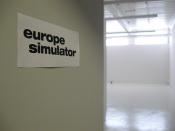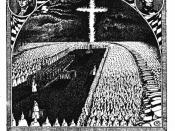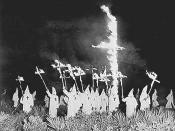It is hard to believe sometimes that a coin talks or that aliens exist, yet once upon a time a US quarter that was laying on my desk started talking to me abut his life starting from the 1920's till the end of world war II in Europe. It is the era in American history that I asked the coin to talk about, assuming that the coin was really going to tell me about its life; I thought it was good thing to do. Reading a book or a newspaper about a period of time in history is something and living throughout that time period is something far more accurate, realistic, and more interesting to listen to. That's what the coin promised to provide me, eyewitness evens that no book or magazine could ever picture to me as the coin did. Here's the story of the mysterious talking coin:
No one (says the coin) ever knew I was a talking con, who could hear, talk, read, and even see what's around me.
I had gone to so many different places and have witnessed so many evens and lived through many eras that Dr. Sutro tried to get his students to live through in his classroom. Though Dr. Sutro did and incredibly wonderful job and an amazing effort to make his students live through each era in his classroom, my stories are far more interesting than his because of the fact that I have lived through them not studied or read about them. I'll start with the 1920's. Being just a quarter laying on the street every now and then, I noticed that the 1920's were an era of wealth, dancing in the street, and the stock market. I would say it was an era of new jobs, new fashions and even new morals. I forgot to tell you that this is my second life. I used to be a Buddha. I believed in reincarnation and this is what I am reincarnated into, a coin. Back before I was reincarnated I was an alcoholic so I'd like to start the 1920's with an eye encounter that has to do with alcohol. It was a cold winter night, as I recall it was January 16, 1920. I was lying on the street in front of the First Congregational Church in Washington DC. Inside the church people were celebrating a new decade. At about midnight, I saw federal agents pouring barrels of whisky down the sewers. I wish I were standing down that sewers with my moth wide open as the agents poured the whisky down my throat, but of course I was a coin and that was impossible to happen. Although alcohol became illegal I was exchanged lots of time for alcohol at places they called "speakeasies" which were mostly like bars, indoors, with peepholes on the doors so that they would clean the place up before they allowed any cops in because it was an illegal business. People were celebrating what they though was the end of the most brutal and ruthless war the Americans had ever witnessed at the time. They were celebrating the beginning of a sudden access to such technological wonders as the radio, movies, the automobiles and the airplane. Along with the new technology and celebrations came new morals and a new traditional life. As I lived through the twenties and watched a transformation, I watched more things change more rapidly than have changed in all the years since. After months of being laid in front of the church a teenage boy who seemed to have found some use of me finally picked me up. I stayed in his pocket for a while. I was then exchanged for a movie ticket starting Rudolph Valentino. There was a big sign at the entrance of the theater with Valentino kissing a girl, which was new in the twenties. I realized that that was a big part of their entertainment, because I saw a lot of people there at the movies. See back I the days before the radio, as a coin, I was used by even teenagers to buy books with. Books were an important source of their entertainment before the new technologies of the 1920's. In the summer, before the 1920's kicked in, the Chautauqua lecture programs were an important part of most teenagers' lives. This is what I meant, earlier in my conversation, by a rapid change of lifestyle and traditions in the country. Moving from place to place I was finally exchanged, a long with other coins and bills, for a three hundred dollar Tin Lizzie. I stayed at the car deal's shop for a while. That car deal was also gave driving lessons to the man who exchanged me for the car. You didn't have to go to a driving school or get a license back then. I was then exchanged for a newspaper. I sat on the table where the owner of the newspaper laid his stuff and I was able to read some of the newspapers he had on the table. The tabloid newspaper was filled with gossipy and stories involving celebrity legends. Some were filled with anger from parents at their kids using bad words and smoking. The article that surprised me the most that day was the one that said, "By 1930, according to the increasing demand for cars, New York City by itself is expected to have more cars on it's streets than there will be on the continent of Europe." That turned out to be true in 1930.
As a coin who's been around for a quite a while now, I think the automobile was the first significant improvement in self-guided transportation since the bicycle in 1839. I traveled from place to place after I left the newspaper stand. I was later exchanged for many new household machines that came out in the 1920's such as electric irons, electric washing machines, refrigerators, and gas stoves. For the first time in my life I wasn't directly exchanged for something hand to hand from the customer to the seller. This time the products the customer who owned me wanted he picked from a catalog that said on it in big bold letters "Sears." I was once also exchanged for a birth control facility, which was in and new in the 1920's.
"What about racial discrimination back then? Do u have any stories to tell about that?" Well (said the coin) a little before 1920, in 1918 I was exchanged for a newspaper called "Negro World" which was started by Marcus Garvey who organized the United Negro Improvement Association as a foundation to allow black Americans to move back to Africa. In the 1925 I was exchanged for poems by Langston Hughes. I tell you from reading those poems I understood the painful black Americans experience. I was also exchanged for a book that talked about Harlem at the time of "Renaissance." What I understood from that book was that first all the Renaissance sprung from the concept of the "New Negro." The "New Negro" was put forth by such people as Garvey, W.E.B Du Bois and, later, Adam Clayton Powell, which told the people that in order to succeeded blacks needed a strong sense of pride in their own race. Again from here to there I was once again on the street, but this time it's different. It was 10-28-1922 in Anderson Indiana when I witnessed the largest parade I ever witnessed. As a coin I have a weaker vision than humans do and my eyes couldn't see the beginning of the parade or even the end. But here's what I saw: I saw thousands of white people dressed in white uniforms with those tall peaked hats and the mask thrown back. They were singing hymns like "Onward Christian Soldiers." They called themselves the Ku Klux Klan. A big part of what the Klan was about was hatred to everyone who's not white, hatred to immigrants from all countries except for English people and some Germans. They also hate Catholics, even if they were white. At the parade I also saw cross burning. The parade was such a thing to watch but to me hate is probably the easiest emotion to teach so it wasn't as big of a deal to me what they were preaching. Of course even if I were interested I wouldn't be able to join the Klan cause I'm just a coin after all. I was once also exchanged for a ticket to go see a play called Show Boat. I was setting on the desk where the tickets were sold and I saw parts of the play. I had seen a lot of movies and plays before but show boat was different. It was the only play with blacks and whites in it treated somewhat equally. It was the first time when white audience saw a black character in such rich human dimensions. I remember a song being played during the pay called "ol' man river," I tell you that song moved the audience to tears. I was used by different people to go see black people play jazz music in Chicago, which for the first time made stars out of black people. Jazz was the new culture's music.
For about two years I was in the stock market. The stock market made people way too rich. Money, which is part of the American dream that many immigrants moved to the US in the 1920's for, without a purpose causes corruption, and that's what money did to the people. Being on the street someday I'd see huge parties from the outside of many houses. Those parties were filled with liquor and food. Sometimes I'd even see one or two big orchestras going to the parties to play there. People wouldn't come out of the parties until the next day in the mourning. It was just a perfect decade filled with wealth and technology till what people later on called "Black Thursday." It was the day the stock market crashed, October 24, 1929. Though only a small percentage of Americans were directly affected by the stock market crash, when $30 billion was lost in matter of days, it was a disaster. I saw people jumping from their balconies and many committed suicides and people were just going insane. The crash of the stock market marked the end of a happy era with a mark of shame on capitalism and the whole country in the history of the country and in the eyes of other nations especially the communists.
As a coin I liked the 1930's. I got more attention than ever in my whole entire life. People were fighting over me. People were looking for me everywhere to use me. People didn't just pass me by on the street. If they found me, they used me. I saw the greatest change of all times. From huge parties and money flowing everywhere to what was called the "Great Depression." While on the street for a while, I witnessed the craziest things happen around me. I saw people jumping off the George Washington Bridge, which had only recently been built. People who were involved with the Wall Street were so disgraced that they killed themselves to get their families the insurance money. It was such a misery for the nation to have to go through all this. Later in the 1930's I was invested in programs such as NRA, PWA, SEC, and FDIC...etc., As the nation started very slowly recovering I was actually given to kids for their allowance. I remember seeing blue flags with an eagle on them on people's windows with the letters "NRA" under it. The misery of the1930's was almost ended by the Second World War. I remember seeing this funny looking man on magazines covers, Adolf Hitler. Later he would become the world's most fearful man and our nation's number one concern. To the Americans it all began in 1940 when the country's first peacetime draft was instated by congress. I, as a coin, was again put into heavy industry, which was a result of the demanding increase for mechanism used in the war. Instead of seeing "NRA" flags on the windows I saw flags on the windows that represented either that a family member is fighting in war or that a family member has died in war. From pocket to pocket I was finally again on the street in New York City. It was May 1945 when I saw a big celebration of the end of the war in Europe. There seemed to be a sense of an ending in the air to the war in the pacific too. With this celebration I end my adventure, I hope you enjoyed my stories.





